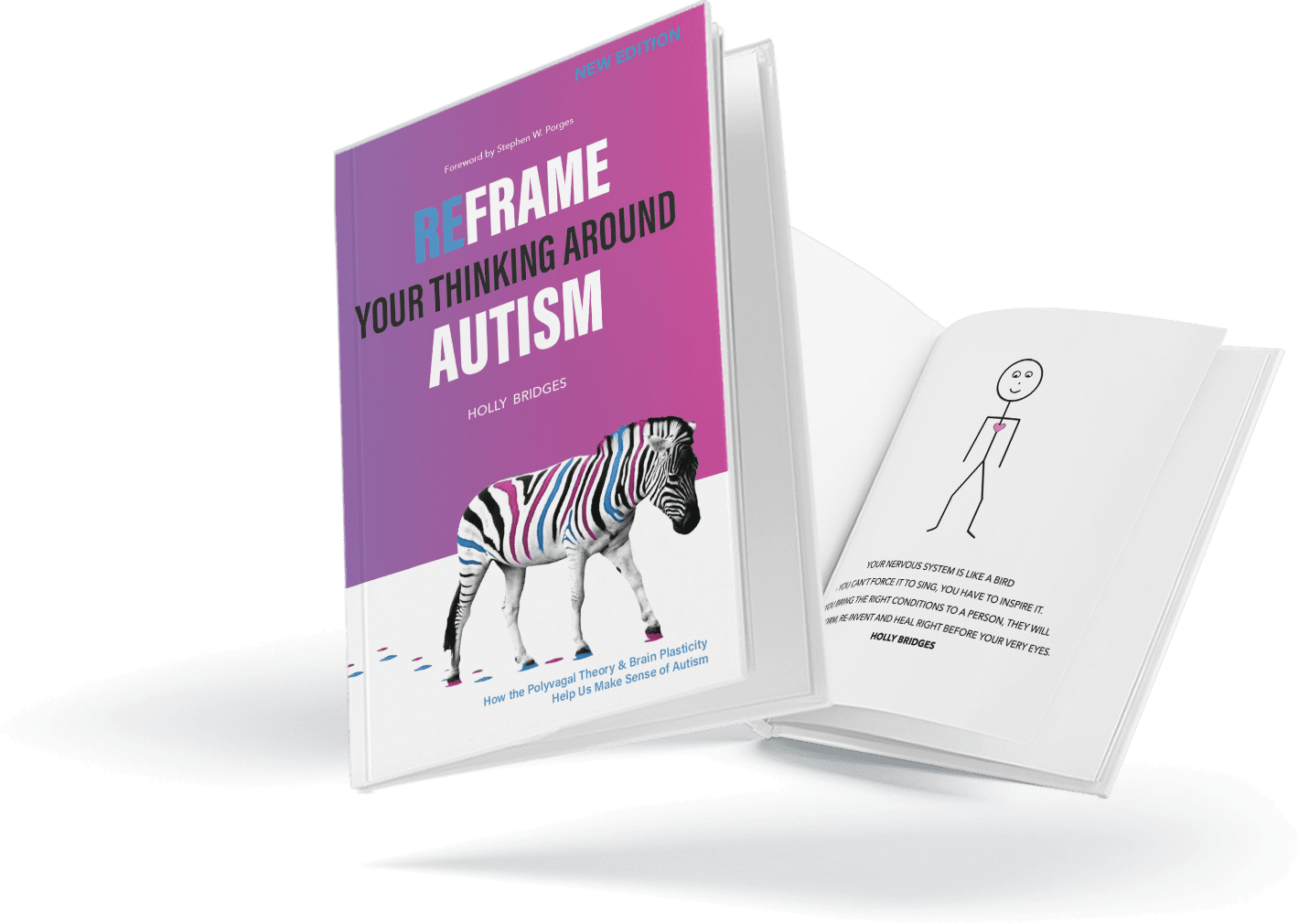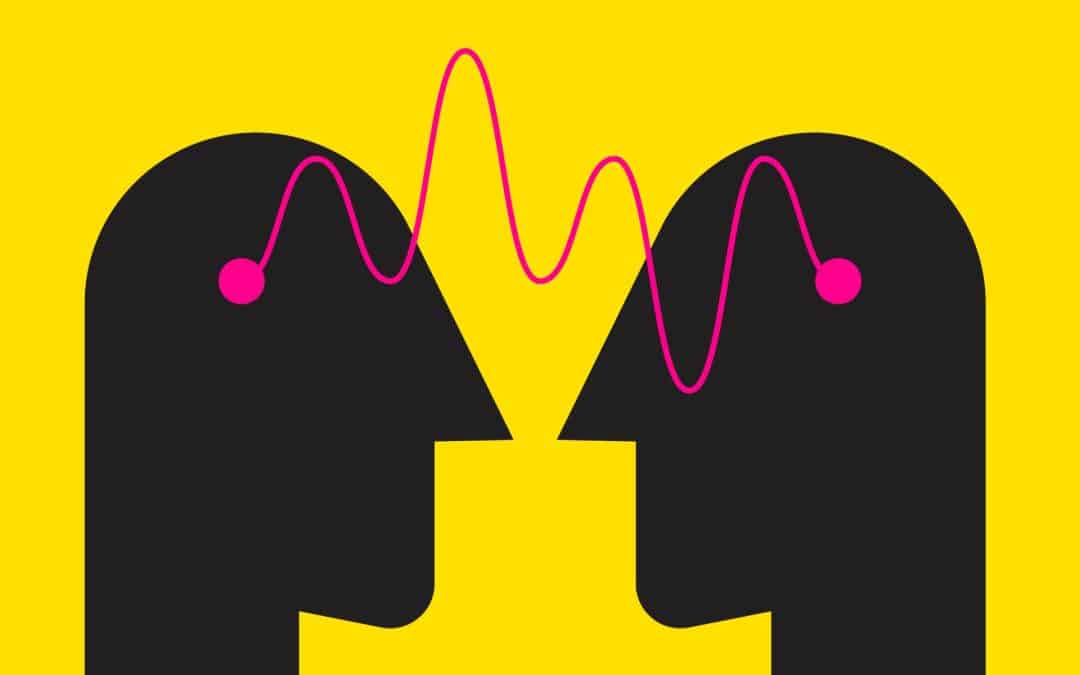A worrying trend in the upcoming world of therapy based on the Polyvagal Theory is the emphasis on the superiority of the ventral vagal states. Like we do in the real world, we consciously and unconsciously give higher value to the ability to be able to smile; to smooth things over; to articulate our thoughts with clarity; to use soft eye contact to soothe and engage those around us. If we or our client cannot do this, it is assumed that we need to get them back into the mode where they can have this ability, this control, this self-mastery. It can seem a worthy goal and the quicker the better. Let’s all hack that vagal nerve and get back to work!
We feel safe when the social system, via the ventral vagus, is in play. People are easy to read, they don’t trigger our flight/fight system, and we can more easily get what we want; people like us more. So, we idealise this capacity and rightly so. It is our highest evolutionary function; it sets us apart from the beasts! But what are we missing when we all too often veer our therapeutic approach towards this end? Who are we serving and are we serving them well with our all too good intentions? Are we of any use to our autistic clients coming from this unquestioned psychological sanctuary?
In our therapeutic approach we psychologists and therapists all too often over prioritise the ventral vagal states (our capacity to socially engage). It’s not surprising since some of our best-known models for the PVT are ladders with the ventral states at the top that can only imply superiority of this function. We are encouraged to ‘climb the ladder’ up and out of the dorsal states, up into the lightness of the social engagement system! We honour the people who have met this challenge well, they are a success story for us as therapists and we also see ourselves as successful when we render our capacity to be just so.
In the world of autism, the goal posts are a little wider and deeper. People on the spectrum do not readily entertain the social system, often it costs them a lot; often they are held deep within the bowels of the dorsal vagus and they have little ability to move the ventral vagus at will. Often it costs them, in will, just to move from one room to the next or to ask their body to pick up a spoon to eat.
Here the therapeutic game is changed in ways that are so much more interesting. Here the general ways of moving into ventral states do not apply. The casual use of top-down, mind to body awareness do not work because the ability to know and operate the mind-body system are simply not there. Even if people can use their social system often the ability to know and master the physical is another realm. We cannot ask people to do breathing techniques, to still the body with mental gymnastics or ‘feel’ their way through something. Often this is simply not available.
Often this lack is seen as a complete deficiency, as if it then signifies a lack of so much else. If you can’t operate your ventral vagus, if you can’t speak, or you take half an hour to say a sentence, you are inept, unintelligent. Although usually nothing could be farther from the truth, what happens if you can’t readily speak or move or articulate your thoughts, is that people feel obliged to fill in the gaps, to speak for you, to make decisions for you, to ‘move things along’ because things really do need to keep moving along! The pace of the session, the day, the week is then guided by the anxiety of others who need a certain momentum to feel safe. Then, however well meaning, we are playing the same old game.
As someone who aligns with being on the spectrum, I resonate deeply with the dorsal state. It is where I most often live, it is where my intelligence comes from, it is where I am informed. All the information that passes through my social systems, my eyes, my ears, my voice, all my senses pass through and are absorbed deep in my dorsal state and it is something I feel keenly and I am nothing without this presence; it is my presence. On the surface I can look animated or dull depending on the state of my physical prowess at any given time, but always the deep dorsal is in play. Here I know myself. It is secondary that I know myself through the ventral, the smiles, the eye contact, the speech, the outward physical; this is less to me. It has always been this way.
As a therapist, I watch my clients and their families grow in awe of the emerging self when we learn to resist the temptation to engage with behavioural outcomes and instead work softly, but potently with the dynamic tension of living within a highly immobilised system and the propensity to shut-down, versus a highly competent and informed mind. We see great gains when we work with close attention to the individual needs of the system while gently encouraging it to know more.
It is a common complaint that ‘people just don’t understand how hard it is’. If your body has always worked for you it is almost impossible to understand the effort it takes to override the inertia of the immobilised physical system. It is not a lack of will, but rather a burnt-out will that leaves you incapable of ‘following orders’ or being compliant, even if this just means engaging with the simplest activity like moving your head up and down. Sometimes you just can’t.
In our session today this kid found he could not speak at the beginning; he could not move his head in the simplest of actions and we were left waiting to see what would happen whilst not wanting to override him or fill in the gaps. Eventually I suggested that he might like either to ‘stay on the couch and try the head exercises or perhaps your body would prefer to start with the ball on the floor, and if that is the case just move down when you’re ready.’ This was the perfect solution as he then easily moved down to the floor and began the session.
It would have been easy to see that he had choice here, and was being obstinate, or disengaged, but in reality, until we got the choreography of the session just right, he simply could not mobilise himself. It takes time. It takes attention. It takes choice and autonomy and the therapist is merely a guide to an emerging process, but a guide all the same. By the end of the session this chap was talking in sentences and was using far less effort in his legs to move the ball. It is still a work in progress, but he is finding his way.
As a therapist you have to go slow. You have to go slow and you have to be attentive to the possible needs and wants of a person who is trying their very hardest, yet cannot ‘perform’ in a way that is satisfying if you want a ventral response to your enquiries and suggestions. There is much to attend to and anything you suggest if it is not done just so will easily engage a shutdown response.
There is a fine art to holding the dynamic tension between moving forward or staying still in a session. Sometimes you think you recognise that maybe, just maybe they have found this new point of stasis – between the ventral and dorsal states– and you need to let take a step back and leave the body to know and then stabilise this new information; or whether maybe it is time to press on and mobilise the body with a gentle exercise; or whether to invite the person’s opinion on this and how would that best be done; or whether this will be too much for them to manage at this point. Sometimes people are just fidgety and bored and they need an entirely different set of engagement to get them to find that quiet place inside them. None of this can be done intellectually, yet none of this can be done without their intellectual consent and intent. Like a Buddhist buried up to her head in snow, teaching her body how to melt ice; we are similarly playing in the land of deep dorsal states. It is not for the feint hearted.
They find they can manage the world better, that they have a mind and body that moves with more ease and agility. Then they learn to play in this newness, then we work some more, it is delicate, private work. Applying a behavioural program with times and duration and intensity and therapist driven, would quickly deaden this process.
What we are looking for is not broken, but waiting in the wings. If you truly appreciate the Polyvagal Theory and the knowledge that the body will shut down and make inaccessible states that are unnecessary in times of danger, then it is perfectly plausible that they can come back online. Even if they have never seen the light of day, they are there. I am seeing a woman in her thirties with strong intellectual disability and she is finding her voice, her taste buds, her independence in ways that are astonishing to her family and support workers in a few short weeks. It’s real, but it’s not a quick ‘whip it into shape’ vagus hack that we are talking about.
For the purists; yes, we are promoting ventral states. We are trying to remind and incorporate them into the system so, as one client described ‘I can have more gears on my bike’, but we do not do so at the cost of the dorsal. We bring it with us, it informs us all along the way. It is the body who makes the decisions, and we learn to listen and attend to its demands, we build relationship and then eventually learn to become to master of the ship – but never the boss. A good captain knows she is beholden to the sea and the state of the vessel and to the wind and the stars.
Very often classically trained therapists miss the wealth of the dorsal states and what they have to offer. If they would just take a step back from their training and their need to fix what is not broken but is waiting for the right conditions to emerge; they would not only get further quicker, they would learn something magical along the way. The people I work with are brilliant. They shine, they think things that others don’t even dream of. These people have much to offer the world, but we cannot make them fit into a shiny, shallow world. They bring something with them from the deep that the world needs. We must find ways to meet them where they are and then enhance their capacity to share their gifts.
This shared with permission from the two clients who are mentioned in the article.







